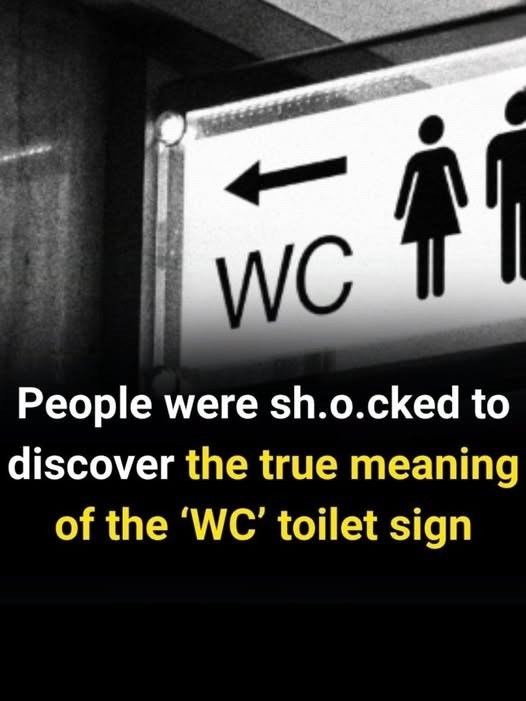The “WC” sign is a ubiquitous icon found on restroom doors worldwide, providing instant relief and direction to those in need. However, few people stop to consider the history and meaning behind these two letters. “WC” stands for “Water Closet,” a term that originated in 19th-century Europe, when indoor plumbing was a groundbreaking innovation that symbolized modernity and wealth.
Before the advent of water closets, people relied on chamber pots, outhouses, or communal latrines, which were not only inconvenient but also breeding grounds for disease and unpleasant odors. The Victorian era saw significant advancements in sanitation, with engineers and inventors developing new ways to manage human waste efficiently. The water closet, a private room equipped with a flushing toilet, revolutionized cleanliness and hygiene, initially serving as a luxury amenity for the wealthy and gradually becoming more accessible to the general public.
As indoor toilets became more widespread, the term “water closet” and its abbreviation “WC” appeared on doors and signs, distinguishing these rooms from bathrooms with only sinks or bathing facilities. The WC sign gained popularity in Europe, particularly in countries like Germany, France, and the UK, and has been adopted in many Asian countries to cater to international travelers.
Interestingly, different regions have developed their own terminology for restrooms. In the United States, “bathroom” and “restroom” are commonly used, while in Australia and New Zealand, “loo” is a popular slang term. Japan, on the other hand, often features elaborate icons and high-tech features in its restrooms.
The WC sign is more than just a practical guide for travelers; it represents humanity’s journey toward improved hygiene, health, and dignity. The introduction of sewage systems, flush toilets, and public sanitation marked a significant turning point in public health history, reducing the spread of diseases like cholera and typhoid. Today, access to safe toilets is considered a basic human right, and the global movement toward providing sanitation for all continues.
Understanding the origin and significance of the WC sign gives us a greater appreciation for the progress we’ve made. The next time you see those two letters on a restroom door, remember that behind this small symbol lies a monumental leap in human civilization, underscoring the importance of health, dignity, and shared responsibility ¹.


